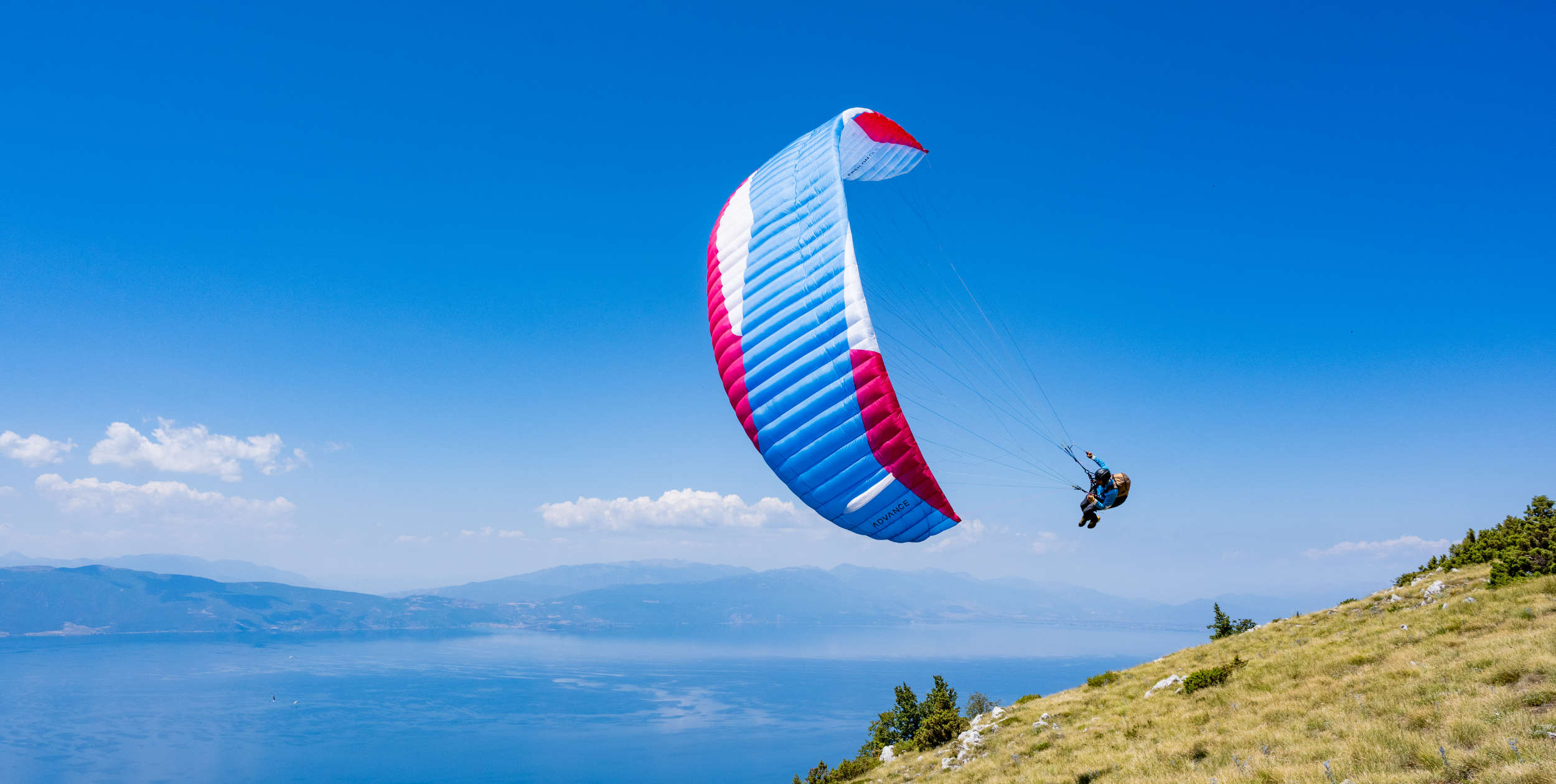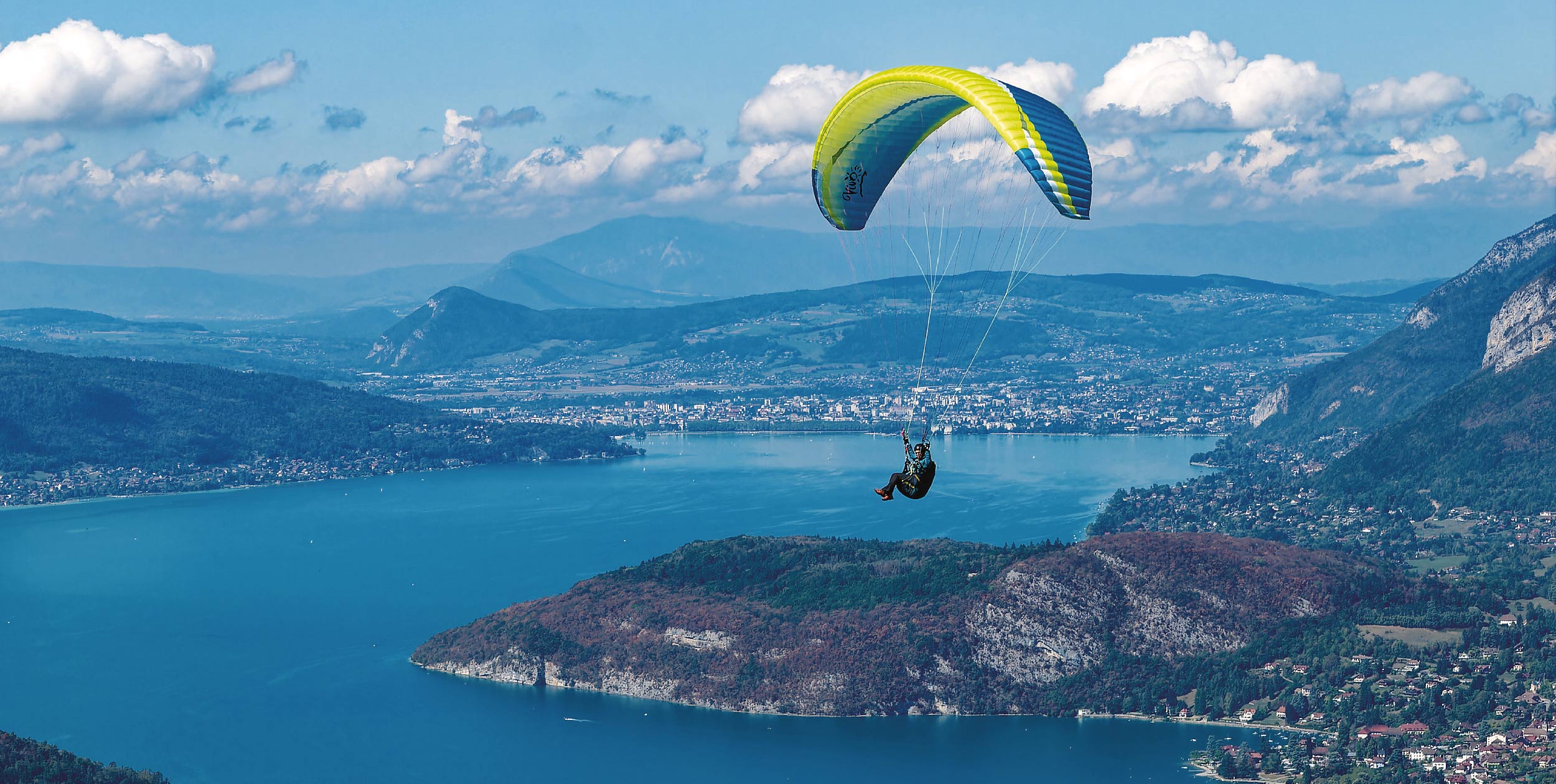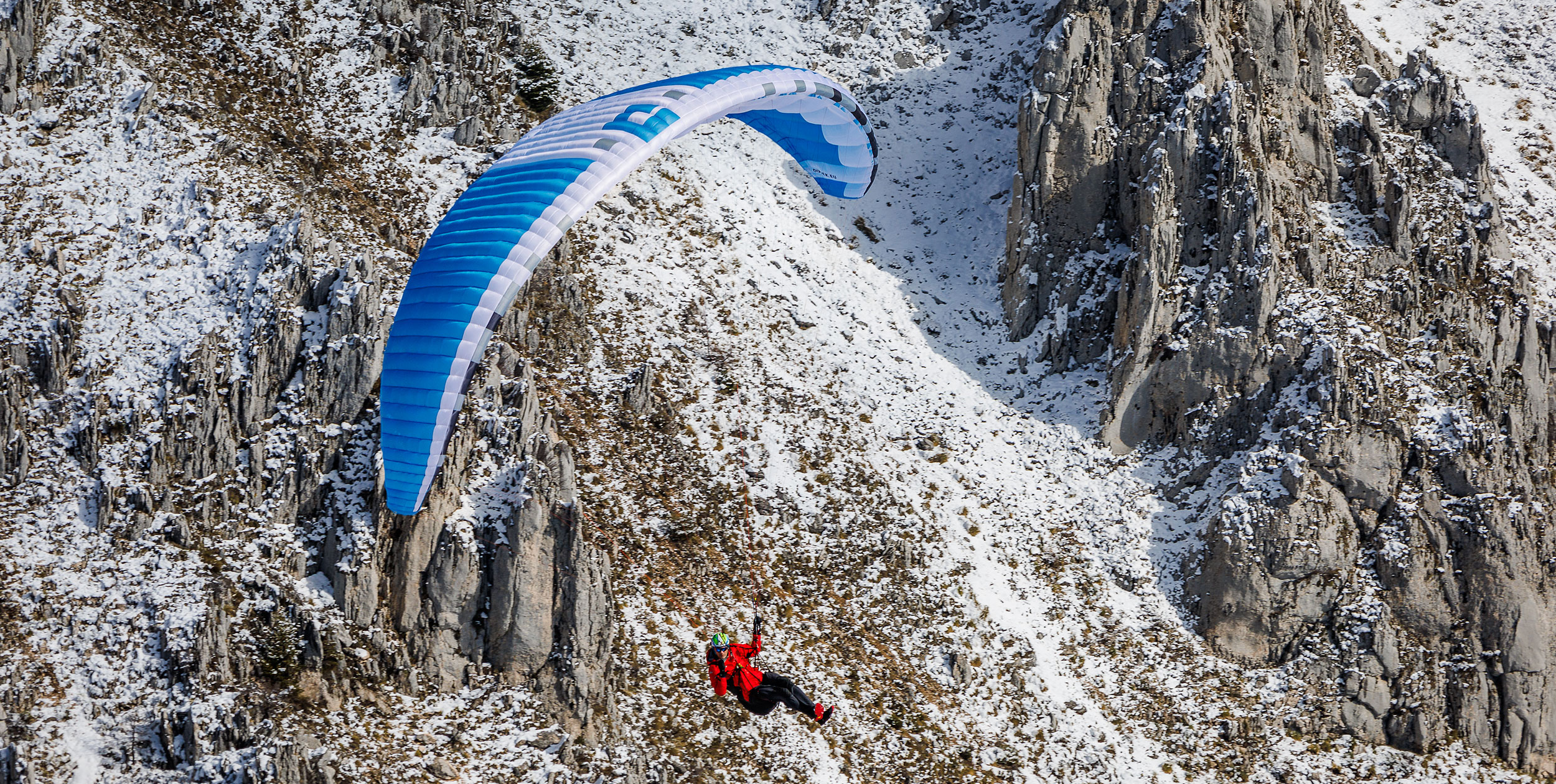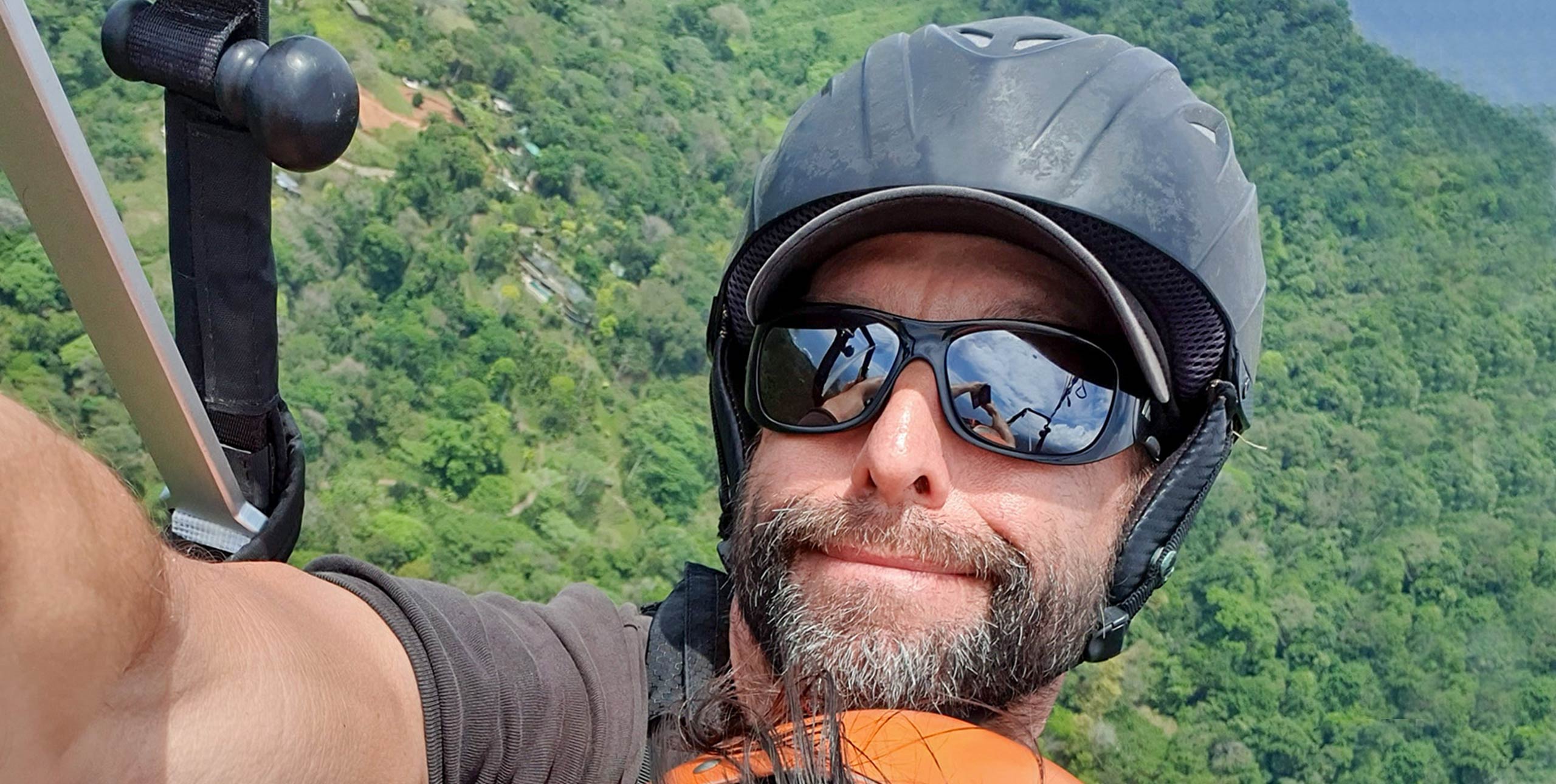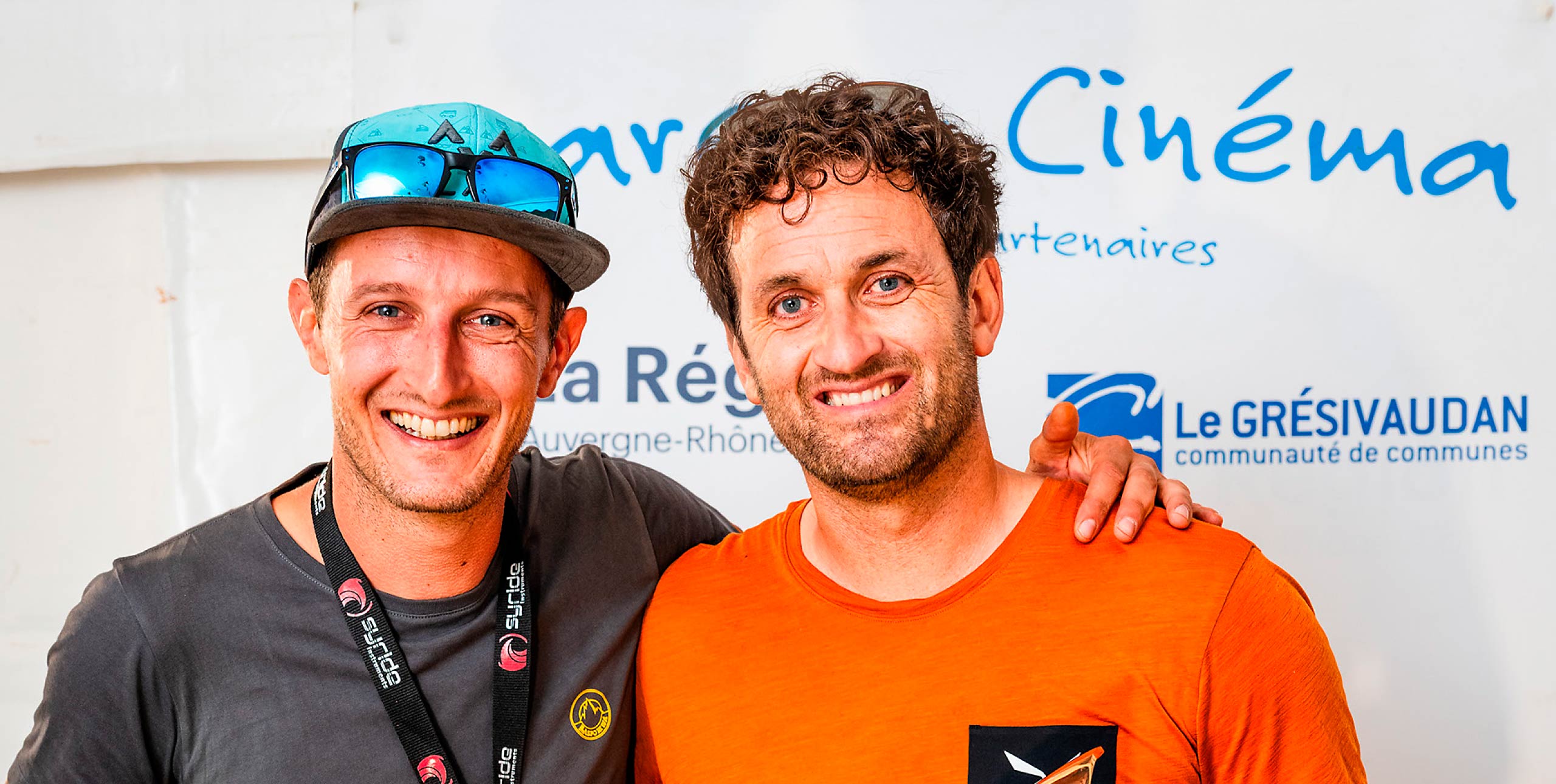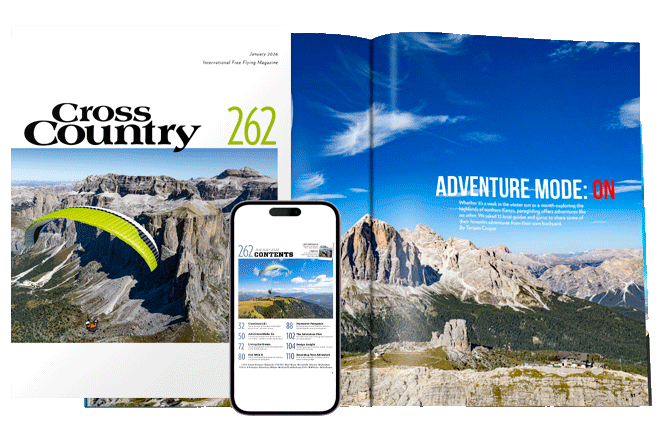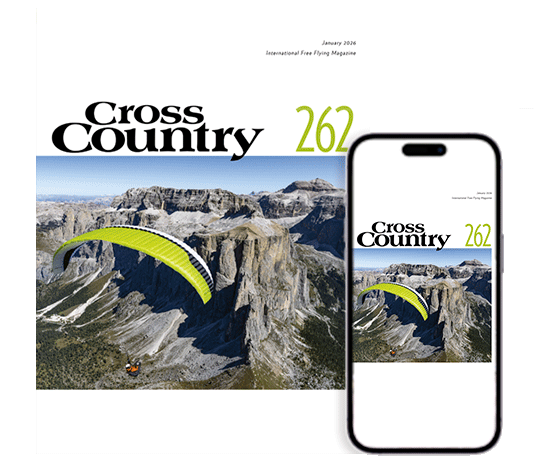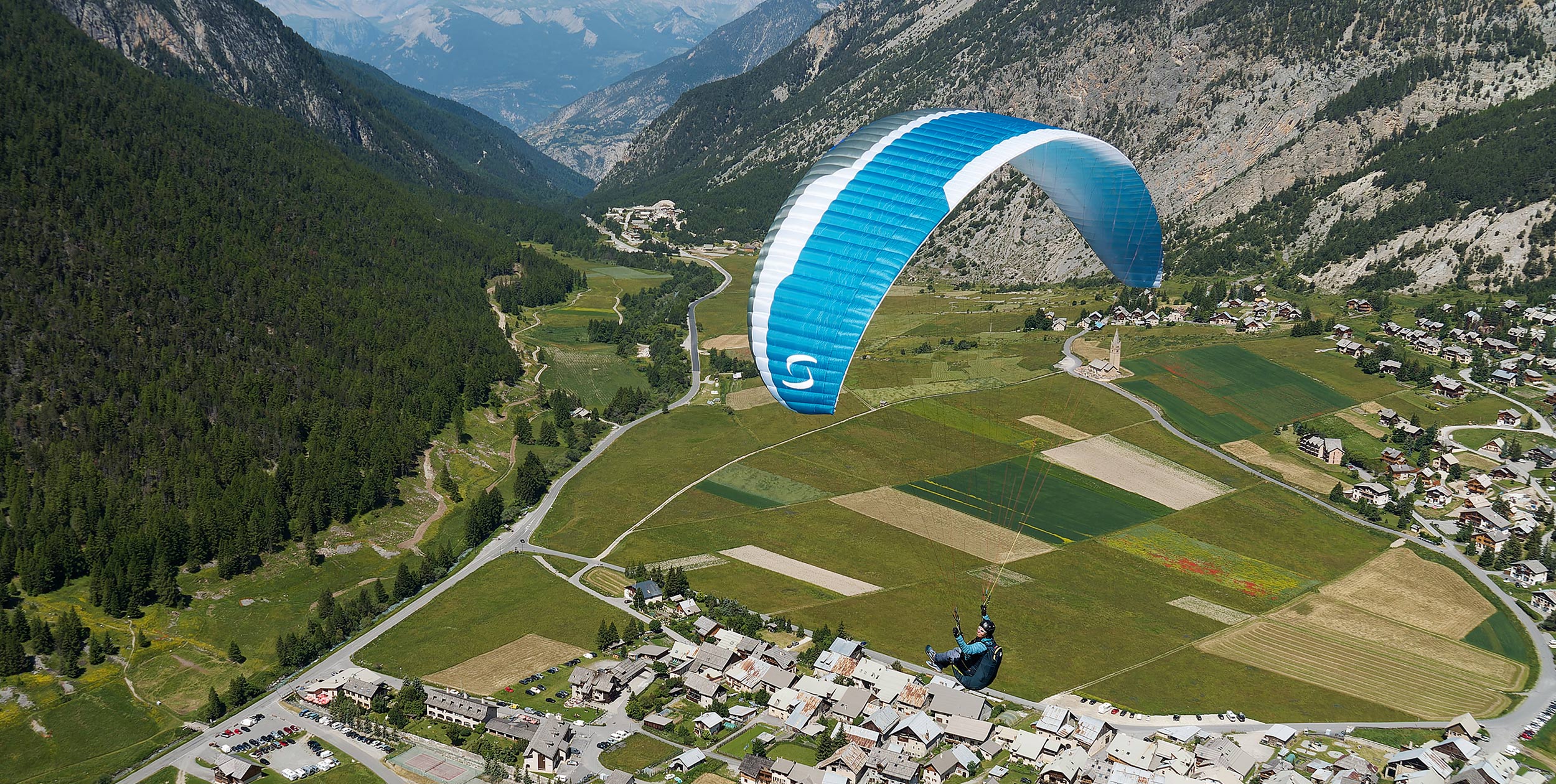
Does X mark the spot for this semi-light high EN-B? Bastienne Wentzel goes digging
The ‘X’ in Step X stands for ‘cross’ which means at the crossroads between performance and light weight. With a weight of 4kg for the S, it is similar to other semi-lightweight wings such as the Advance Iota DLS. It replaces Supair’s Step 2 and Step Light. Supair’s designer Pierre-Yves Alloix says: “You do not need to choose between light and classic, this new Step is ‘all in one’: almost as light as the Step Light with similar durability of the Step.”
Unboxing
The first thing I see when I unwrap the fairly compact package is the risers. They are TINY! They’re made of the thinnest black webbing I’ve ever seen on an intermediate wing. Supair have used the same custom-made 7mm nylon webbing on the previous Step 2 and Step Light and on the EN-C Savage. The colour-coded hook-in loops are equally narrow.
After the first surprise, I was relieved to find that the risers and lines are actually quite easy to sort for this class of glider. There is no unusually high tendency to turn or twist and the risers and line loops are colour-coded. The red fully unsheathed Edelrid 8000 series lines are used on many high-B gliders nowadays and sort just fine.
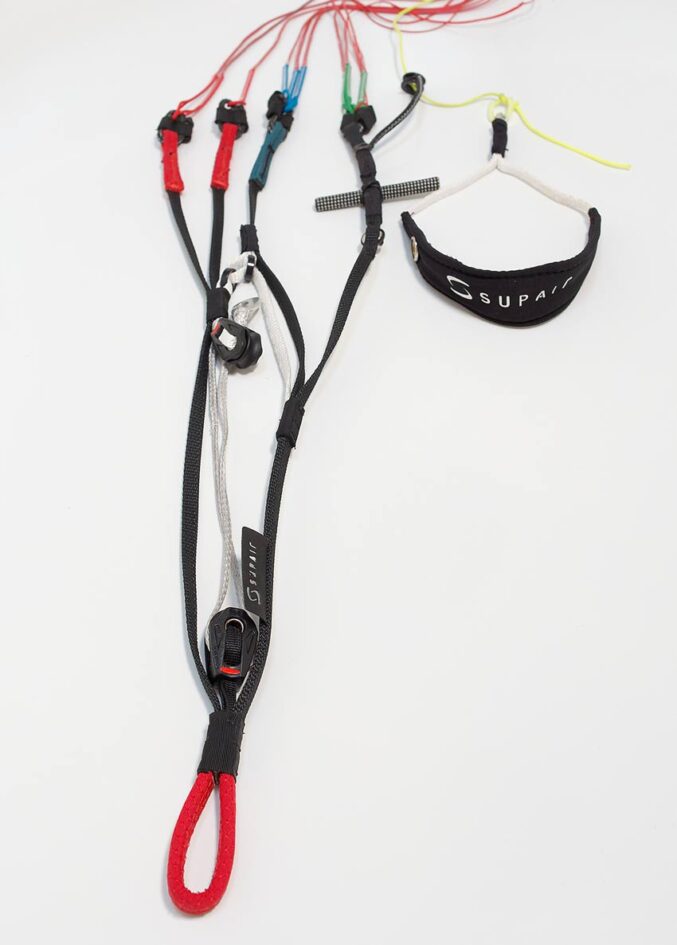
Materials
The lines connect to the risers with softlinks with elastic placeholders and socks to protect them (which were missing on the review glider). Extra sets of different length softlinks are delivered with the glider which allow line trims of up to 8mm without the need for line loops, although the C-lines already include trim loops as well.
There is a thin bar for C-riser control, which is comfortable enough and doesn’t catch lines too easily. It is removable for those who don’t fancy it and fixed in place with a small rubber band.
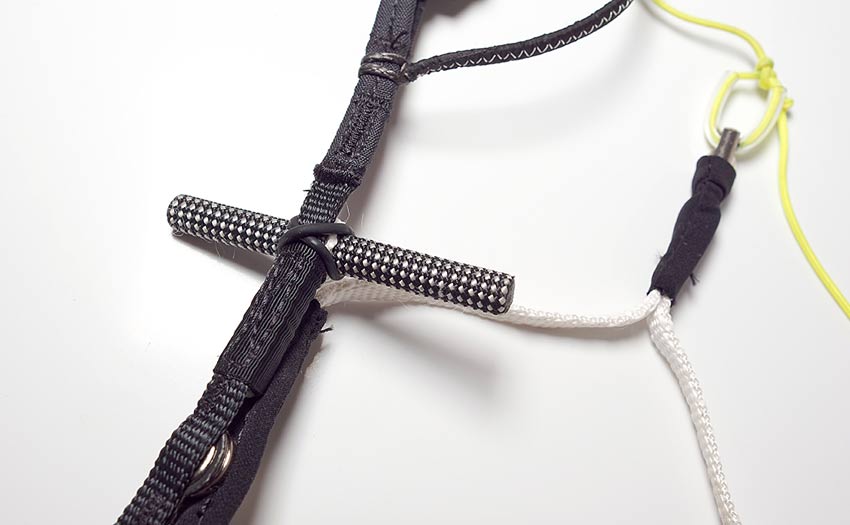
The brake loops have a soft part over the top of the hand and dyneema cord at the ends. With a half-wrap you’re holding on to the Dyneema part, which I found could start to irritate during longer flights. I ended up holding the brakes with the ‘acro-grip’ – loops around the wrist and the end of the loop between two fingers.
The Ronstan speed pulleys are between the A- and B-risers instead of on top of the A-riser. It takes a close look to find out which way they should be connected. Also, the pulley pops out from between the A- and B-riser occasionally. Both are not safety issues but just take some attention to ensure the speed system runs smoothly.
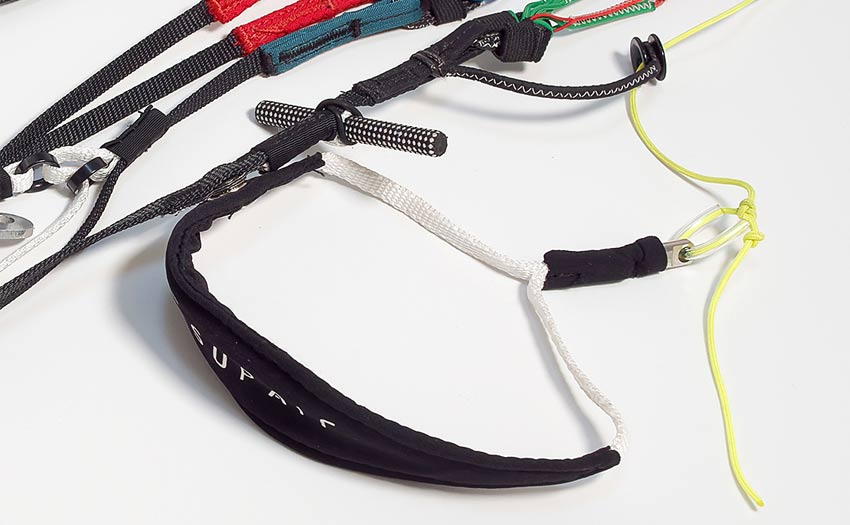
Classic design
After inspecting the racy risers the rest of the wing looks standard, which is exactly what designer Pierre-Yves intended: “My philosophy is to give to the customers the exact things they need. I always try to be as minimalist as possible.”
The Step X only has short rods over the top and bottom of the nose. Pierre-Yves explained: “If I use long rods, the glider will be more complex to pack and you might need to replace the rods during the life of your wing. It will also be heavier. The actual length is optimised for performance.” There is a ‘baby’ sharknose and average size cell openings. Pierre-Yves thinks an aggressive sharknose is not the best choice for this category of glider. “The glider will be too pressurised and aggressive.”
The glider was designed from scratch, says Pierre-Yves, and the internal structure is completely new. The outer fabric is a mix of various types of Dominico (N20 DMF and 10D) and internally you find a mix of Myungjin MJ32 HF and Porcher Skytex 27 HF. There are optimised ‘finger diagonals’ sliced into three or four bands which ensure a lasting structure. The canopy feels light but not overly vulnerable.
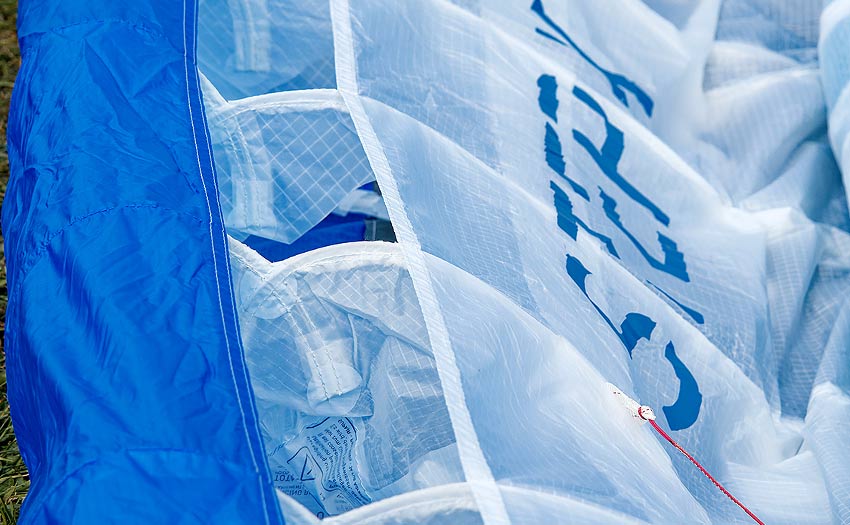
First flights
The Step X is very easy to launch. I had quite some variation in launch conditions over the review period. After every launch I found myself thinking, “That wasn’t so bad actually,” thanks to the steady behaviour of the wing. It rises easily in light winds and doesn’t shoot in strong winds. Equally, it stays on track and doesn’t need much sideways correction, which all adds up to the easy behaviour.
Landing is a breeze with the Step X, it can be flown quite slowly and still has a good flare for a soft touchdown in any conditions.
My first flights went from scratching low to booming narrow climbs within quite a short time. It took me a while to understand what the Step X was trying to tell me in light conditions. It is not overly chatty but it moved more than I’d expect in these conditions. It didn’t feel as floaty as some other wings, nor was it pulling me in any particular direction. The brakes felt a bit soft and I had a hard time to find and keep the climbs.
Over the hours, I learned a bit more about how to fly this glider. It seems it likes to be left alone in light conditions. That means hands up and letting it fly at a higher speed. I may have been choking the wing a bit due to the movements of the canopy, which is totally unnecessary because (as we will see later) it has very benign behaviour. When I changed my style, we got along a lot better. The wing started to float more and I could stay up easily in light conditions.
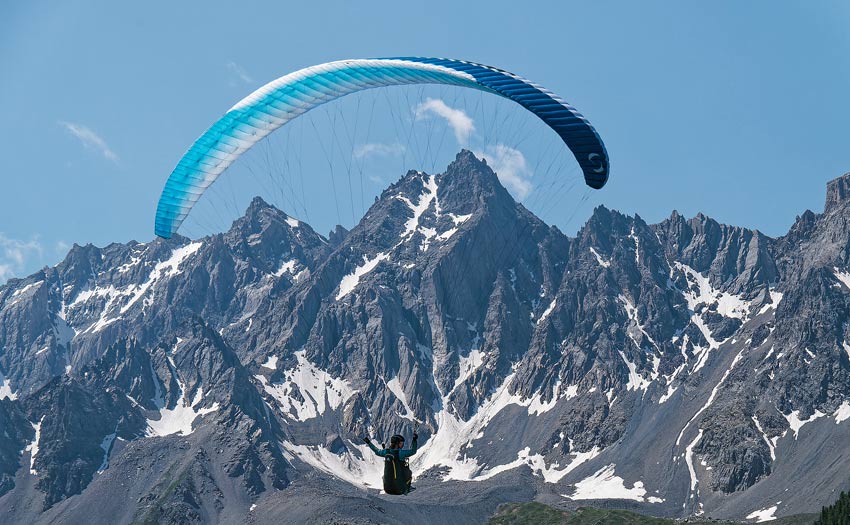
Strong conditions
The entire wing seemed to change the moment we hit a strong thermal. The canopy tightened up, the brakes felt more direct and it was very easy to get the wing into a tight climb and keep it there. It seemed to climb quite efficiently compared to the gliders around me. It didn’t have any tendency to be pushed out and the amount of pitching or shooting was much less than I expected. If any, the pitches were not very energetic and I soon found they don’t need a lot of catching.
This feeling returned again and again over the weeks I flew this glider. Hitting a strong core, the wing has a modest positive pull, it doesn’t get knocked out and moreover, it feels very safe in these conditions. For a glider with an aspect ratio of 5.65 and 61 cells the behaviour is remarkably benign.
The canopy is very solid and I didn’t have any collapses. It is easy and direct to control. The tips are not as pressurised as the rest of the canopy and as a consequence, they flutter once in a while but these are non-events. The brake pressure might be a bit on the strong side in these conditions, where it feels quite soft in mild conditions.
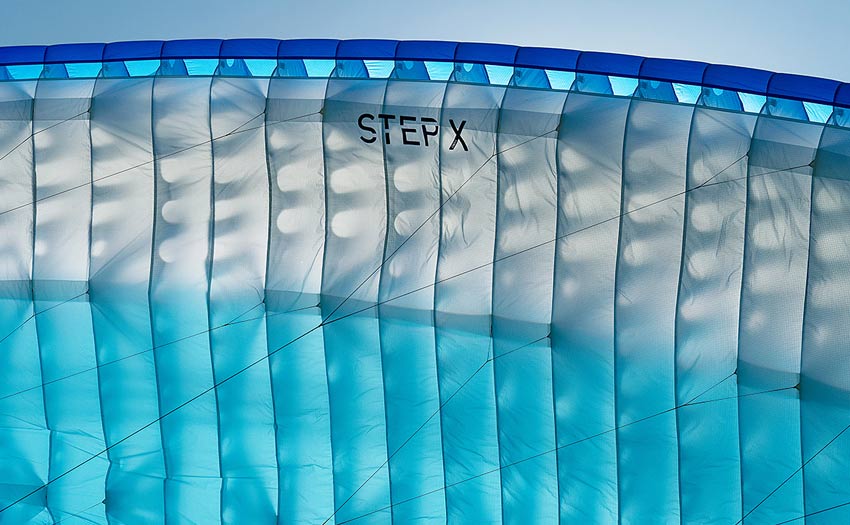
Performance and fun
A rough measurement of speed revealed around +10km/h on full bar. Comparing the glide in still air with another recent high-end EN-B (same size and loading) revealed that their speed and glide were practically the same.
Without speed bar the pressure on the Cs is quite high. There is no bridge between the B- and C-risers, to avoid a more complex pulley and line system, explained Pierre-Yves. I ended up using the C-control only on half-bar or more. The response to small corrections is fine but requires some force. The glider is very stable on bar and doesn’t need much correction anyway.
The Step X is also a very playful wing. Even though it doesn’t roll or pitch a lot in turbulence, it is very happy to dive into big wingovers or spirals. Although it feels quite energetic, these are easy to control on exit. It’s forgiving for its class, although there are multiple G’s involved and you still have to pilot it out of the turn of course. For quick descents, big ears are as easy as they come.
The verdict
The Step X has all the performance of a modern high-B in a compact, uncomplicated and light package. The feel of a wing is a very personal thing and will probably be one of the main points how you choose your next glider.
The Step X talks a bit more than average in light air, which a lot of pilots will appreciate. For me, the glider excelled in easy launch and landing behaviour but most of all in strong conditions, where it tightens up and gives you a very confidence-inspiring lift to cloudbase.
Manufacturer’s SPECIFICATIONS
Supair say: “The Step X is aimed at leisure pilots who wish to go further in XC while continuing to enjoy the pleasures of walking and flight.”
Pilot level: Intermediate
Sizes: XS, S, M, ML, L
Certified take-off weight (kg): 55-75, 70-90, 80-100, 90-110, 105-125
Flat area (m²): 21, 24, 26, 28, 30
Glider weight (kg): 3.8, 4.0, 4.3, 4.6, 4.8
Cells: 61
Flat aspect ratio: 5.65
Certification: EN-B
Bastienne Wentzel flew the Supair Step X size S (70-90 kg) at 82-85 kg with a Skywalk Cruise seatplate harness, over 10 hours in the Alps in summer.
Published in issue 243 (September 2023)


